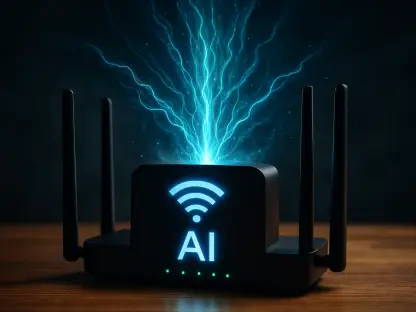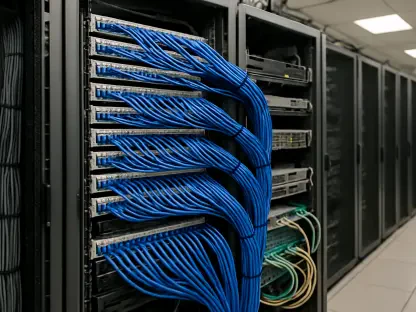The rapid advancement in artificial intelligence (AI) and edge computing is making Neural Processing Units (NPUs) critical components in an increasingly data-driven world. Forecasts indicate a remarkable Compound Annual Growth Rate (CAGR) of 17.73% from 2025 to 2032. This emphasizes NPUs’ escalating importance as they are expected to grow from USD 30.32 billion to an estimated USD 111.904 billion. NPUs are becoming integral to various industries due to their ability to handle complex neural network computations quickly and efficiently. Their role in enhancing AI integration in fields like healthcare and the automotive industry positions NPUs as key drivers for future technological innovations. This rise underscores the broader implications of NPUs’ expanding applications and their transformation of computing architectures to accommodate evolving market demands.
Driving AI Adoption Through Efficient Computation
The Growing Need for Advanced AI Solutions
As AI continues to infiltrate diverse industries, the demand for accelerators capable of handling intricate computations with reduced latency is soaring. NPUs, specifically engineered for deep learning tasks, provide an unparalleled advantage over traditional processing units. Unlike Central Processing Units (CPUs) and Graphics Processing Units (GPUs), NPUs are designed to excel in parallel processing and in-memory computation. This enables them to boost performance while minimizing energy consumption, making them ideal for AI applications that require high computational power but prioritize energy efficiency. This development is particularly relevant in AI-driven fields such as healthcare, where NPUs facilitate real-time diagnostic capabilities, and automotive sectors, which rely heavily on real-time decision-making frameworks inherent to autonomous vehicle technologies.
Real-Time Applications in Key Industries
The ability of NPUs to process extensive neural network workloads with speed and precision has made them invaluable in various sectors. In healthcare, NPUs are increasingly utilized for real-time patient monitoring and diagnostics, supporting tasks like image processing and predictive analytics, which are crucial for effective and timely medical interventions. The automotive industry is harnessing NPUs to enhance autonomous vehicles’ decision-making capabilities, enabling rapid data analysis from multiple sensors to ensure safe and effective navigation. The speed and efficiency of NPUs cater to the demands of real-time applications, proving indispensable not only in autonomous vehicle technology but also in other tech-driven areas. As industries continue to adopt sophisticated AI solutions, the role of NPUs becomes increasingly significant.
Technological Advancements in NPU Architecture
Pushing Boundaries with Specialized Design
The evolution in computing architectures, with NPUs at the forefront, is changing how data processing and AI tasks are approached. These advancements are not just about increasing computational power; they involve designing processors specifically to meet the unique demands of AI workloads. NPUs excel in handling complex tasks such as language processing, image recognition, and large-scale data analytics. Their specialized architecture supports parallel processing, enhancing both performance and efficiency. This progress is instrumental in applications where NPUs are increasingly preferred over CPUs and GPUs, as their tailored capabilities offer greater alignment with AI operations that include extensive data handling and a need for expedited conclusion times.
Addressing IoT and Data Proliferation
In the era of the Internet of Things (IoT), the volume of data generated has surged, requiring robust processing capabilities for interpretation and action. NPUs’ prowess in managing large-scale, diverse data inputs in real time presents a critical solution to this challenge. Their integration into IoT devices, such as smart home devices, surveillance systems, and industrial sensors, supports enhanced local data processing. This facilitates quicker response times and reduces the dependency on external cloud services, leading to efficient data management. By processing data at the edge, NPUs reduce latency and improve the reliability of services and applications. This functionality is crucial as the expansion of IoT continues to add complexity to data ecosystems across various sectors.
Regional Dynamics and Market Expansion
Leading Geographies in NPU Adoption
The global NPU market demonstrates significant regional disparities in adoption and growth. North America emerges as a frontrunner, predominantly due to substantial investments in research and development and the early adoption of NPUs in sectors like healthcare and defense. This region benefits from a robust technological infrastructure, which supports the rapid incorporation of advanced AI solutions. Europe’s automotive sector, particularly in Germany, is also witnessing swift advancements, with NPUs driving innovations in autonomous and electric vehicles. This regional momentum is bolstered by collaborations between key automotive manufacturers and AI technology firms, accelerating the pace of NPU integration. Both regions are capitalizing on their strengths to lead in the NPU space.
Expanding Horizons in the Asia-Pacific and Emerging Markets
The Asia-Pacific region is on track to experience the fastest growth rate, driven by increasing consumer electronics demand and the tech-savvy environments of China, South Korea, and Japan. Government initiatives supporting AI adoption and smart city projects further fuel this expansion. This phase of growth reflects the region’s emphasis on manufacturing advancement and its strategic positioning as a hub for cutting-edge technology. In contrast, regions such as South America, the Middle East, and Africa are beginning to recognize the potential of AI-driven technologies in agriculture, energy, and public safety. These markets present fertile ground for NPU proliferation, as infrastructural development continues to shape their technological landscapes.
Major Players and Market Trends
Pioneers in Innovation and Integration
The NPU market is shaped by industry giants like NVIDIA, AMD, Intel, and Qualcomm alongside emerging companies such as Hailo and Cerebras Systems. This mix of established players and dynamic startups underscores a competitive environment focused on innovation. These companies are investing heavily in research and development to create custom AI accelerators that enhance performance, improve inference speeds, and reduce energy consumption. Their efforts reflect a collective push toward seamless system integration, aiming to deliver solutions that are capable of merging with existing infrastructures. Many of these organizations are shifting toward creating more efficient, environmentally friendly products to meet increasing consumer demands for sustainable technology.
Emerging Opportunities and Future Directions
Opportunities in the NPU market are diverse, extending across sectors like cloud-based AI applications, where there’s a growing need for efficient data processing in hyperscale data centers. These centers manage large-scale AI training and inference workloads, pivotal for several industries. In the gaming sector, NPUs augment processing power for enhanced graphics and real-time responsiveness, improving user experiences through immersive technology. Beyond gaming, the integration of NPUs in edge AI and IoT technologies is rapidly transforming device capabilities across industries, from industrial sensors to autonomous drones. This innovation fosters new avenues for NPUs, cementing their role in the expansion and evolution of smart systems in the modern technological ecosystem.
The Evolving Landscape of NPUs
The landscape of computing architectures is undergoing transformation, with Neural Processing Units (NPUs) taking a leading role. This shift is redefining the approach to data processing and Artificial Intelligence (AI) tasks. The focus of these advancements goes beyond merely boosting computational power; it emphasizes the creation of processors tailored to address the specific requirements of AI workloads. NPUs are particularly adept at managing intricate tasks like language processing, image recognition, and comprehensive data analytics. Their distinct architecture enables superior parallel processing capabilities, which boosts both performance and efficiency. Because of this, NPUs are becoming increasingly preferred over traditional CPUs and GPUs in various applications. Their custom capabilities align more effectively with AI operations, which often handle extensive data and demand quick processing times. This progression is crucial in the evolution of computing, as it paves the way for more specialized and efficient AI-driven technology solutions.









